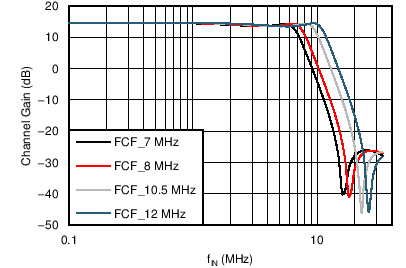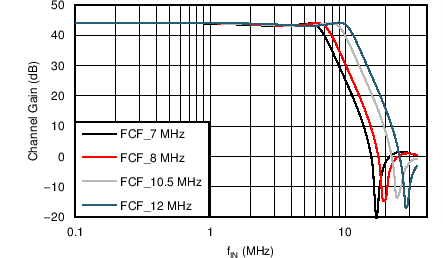SBASB81 December 2024 AFE5401-EP
PRODUCTION DATA
- 1
- 1 Features
- 2 Applications
- 3 Description
- 4 Pin Configuration and Functions
-
5 Specifications
- 5.1 Absolute Maximum Ratings
- 5.2 ESD Ratings
- 5.3 Recommended Operating Conditions
- 5.4 Thermal Information
- 5.5 Electrical Characteristics
- 5.6 Digital Characteristics
- 5.7 Timing Requirements: Output Interface
- 5.8 Timing Requirements: RESET
- 5.9 Timing Requirements: Serial Interface Operation
- 5.10 Typical Characteristics
- 6 Parameter Measurement Information
-
7 Detailed Description
- 7.1 Overview
- 7.2 Functional Block Diagram
- 7.3 Feature Description
- 7.4 Device Functional Modes
- 7.5 Programming
- 7.6 Register Maps
- 8 Application and Implementation
- 9 Revision History
- 10Device and Documentation Support
- 11Mechanical, Packaging, and Orderable Information
Package Options
Mechanical Data (Package|Pins)
- RGC|64
Thermal pad, mechanical data (Package|Pins)
- RGC|64
Orderable Information
7.3.3 Antialiasing Filter
The device introduces a third-order, elliptic, active, antialias, low-pass filter (LPF) in the analog signal path. The filter –3-dB corner frequency can be configured using the FILTER_BW register, as shown in Table 7-3. The corresponding frequency response plots are shown in Figure 7-2 and Figure 7-3.
Table 7-3 FILTER_BW Register
| FILTER_BW | CORNER FREQUENCY (MHz) |
|---|---|
| 0 | 8 |
| 1 | 7 |
| 2 | 10.5 |
| 3 | 12 |

